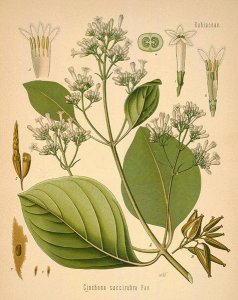Law of Similars Discovered
Homeopathy emerged during a time when medical practices were unregulated and perilous. Patients faced treatments involving toxic substances such as lead, mercury, and arsenic, or procedures like bloodletting, purging, and blistering. Many individuals died from the treatments rather than the diseases they were intended to cure.
Samuel Hahnemann (1755-1843), the founder of homeopathy, studied medicine during this period and established a practice after graduating from the University of Erlangen in 1781. However, he grew increasingly disillusioned with contemporary medical practices and stopped practicing medicine in 1790 out of concern for his patients’ well-being.
The Cinchona Experiment
To support his family, Hahnemann focused on chemical studies and translating foreign medical texts into German. While translating a text on Cinchona Bark (the source of Quinine), Hahnemann conducted a groundbreaking experiment. The text claimed Cinchona’s effectiveness against malaria was due to its bitterness and astringency, which Hahnemann found illogical. He questioned why Cinchona Bark was effective when other bitter and astringent substances were not.
Hahnemann decided to test Cinchona Bark on himself, and after the first dose, he developed malaria-like symptoms such as fever, thirst, drowsiness, palpitations, anxiety, and muscle and joint pain. The same symptoms recurred with each subsequent dose.
This experiment led Hahnemann to hypothesize that Cinchona Bark could treat malaria because it produced similar symptoms in healthy individuals. He spent years conducting more experiments with various substances, observing that they induced symptoms in healthy people akin to those they could treat in the unwell.
Birth of Homeopathy
In 1796, Hahnemann published a groundbreaking essay detailing the Law of Similars phenomenon, demonstrating its effects in numerous substances. The concept of “like treats like” was finally validated. This year is considered the birth of homeopathy.
China officinalis (Cinchona bark) – What Does it Treat?
China, the homeopathic medicine derived from Cinchona Bark, treats symptoms resembling those Hahnemann experienced: cold extremities, drowsiness, palpitations, anxiety, trembling, limb weakness, bone discomfort, joint rigidity, pulsating headaches, flushed cheeks, fever, and thirst. These symptoms are similar to those experienced by malaria patients.
Additional testing revealed China’s usefulness in treating complaints from fluid loss, recurring symptoms every two or seven days, symptoms alleviated by strong pressure, autumn asthma, certain gallbladder diseases and colic, flatulence, insomnia due to elated thoughts, and fear of animals.
Homeopaths have also observed that China is effective for mental and emotional symptoms such as irritability, paranoia, mood swings, poetic or artistic abilities, grandiose thoughts, and imaginings that seem foolish the next morning. China is often prescribed for moody, sensitive, and idealistic individuals, particularly teenagers. Treatment with China restores patients’ mental, emotional, and physical well-being.
Tutorials
- Homeopathy: an Introduction
- Tutorial 1 – The Law of Similars
- Tutorial 2 – Law of Similars Discovered
- Tutorial 3 – Potentisation
- Tutorial 4 – Three Scales of Potency
- Tutorial 5 – Benefits of Potentisation
- Tutorial 6 – Provings
- Tutorial 7 – The Vital Force
- Tutorial 8 – Potentised Remedies and the Vital Force
- Tutorial 9 – Palliation, Supression or Cure?
- Tutorial 10 – Direction of Cure
- Tutorial 11 – Return of Old Symptoms
- Tutorial 12 – Homeopathy and Other Medicinal Therapies
- Tutorial 13 – Finding a Good Homeopath
- Tutorial 14 – That First Appointment
- Tutorial 15 – What to Expect (Part A)
- Tutorial 16 – What to Expect (Part B)






